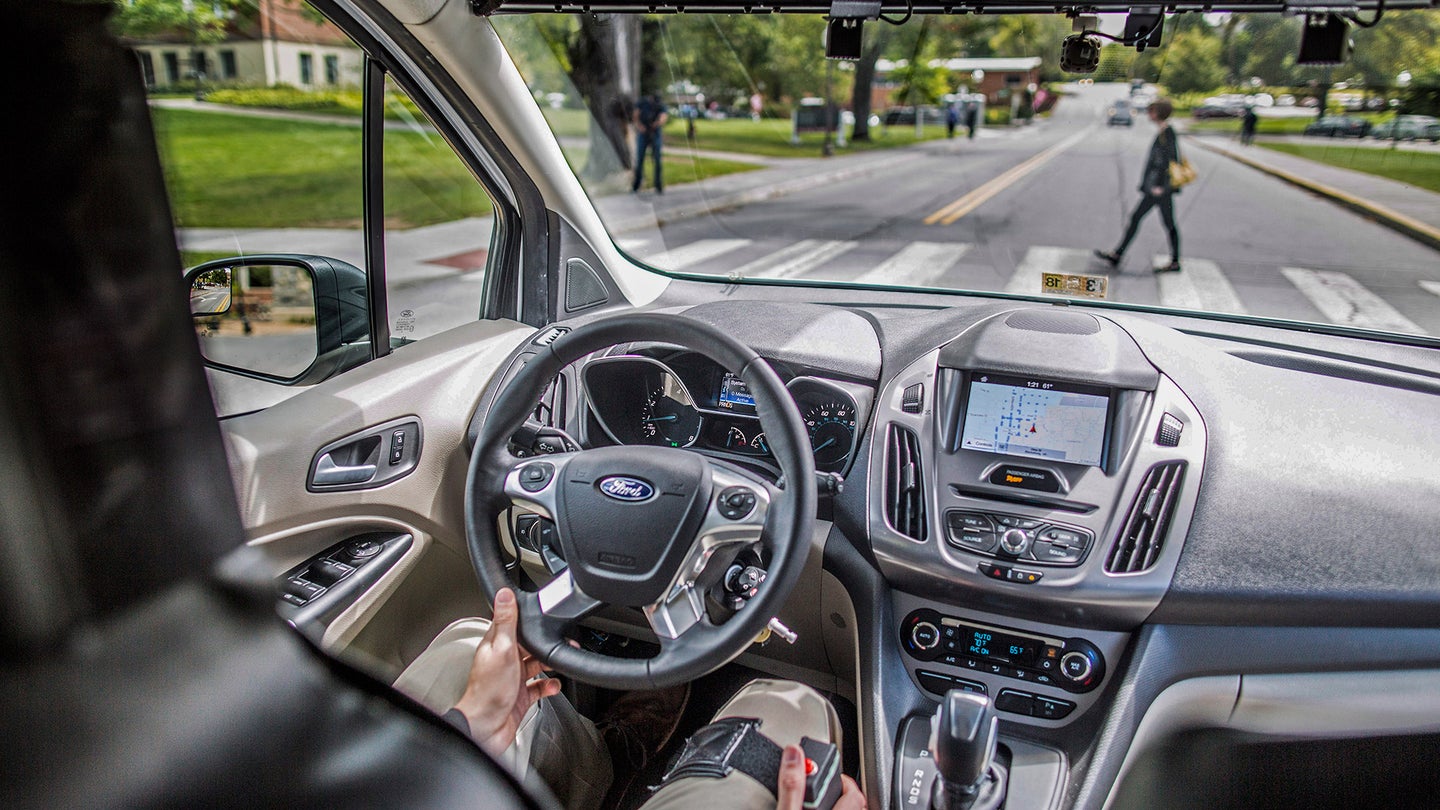Ford Admits It Was Behind the Fake Self-Driving Van Seen in Virginia
It was to test ways for self-driving cars to communicate with pedestrians.

Last month, residents of Arlington, Virginia, were surprised to see what appeared to be a driverless Ford Transit Connect roaming the streets. It was later revealed that the van was driven by a man dressed as a car seat, which only added to the confusion.
Now, Ford is finally explaining the purpose of the stunt. It was actually an experiment conducted in concert with Virginia Tech; the automaker and the university wanted to test ways for self-driving cars to communicate with pedestrians. It's an issue that's been noted before: Human drivers can communicate their intentions with eye contact or hand gestures, but what happens when there is no driver behind the wheel?
To find out, Ford and Virginia Tech fitted a Transit Connect van with a light bar that could display different patterns of flashing lights. Two white lights moving side to side indicated the vehicle was about to yield to a pedestrian, a solid white light denoted full-autonomous mode, and rapidly blinking white lights indicated the van was about to accelerate away from a stop.
The van wasn't actually autonomous, but Ford and Virginia Tech needed pedestrians to believe it was. That's where the "seat suit" came in. With the driver concealed, researchers could study how pedestrians and other road users interacted with what they thought was a fully-autonomous car. Cameras mounted on the van recorded those reactions.
Researchers chose Arlington and its environs for the test because of the high density of traffic and pedestrians. The Transit Connect covered 1,800 miles during the experiment, yielding more than 150 hours of data on encounters with pedestrians, cyclists, and other cars.
While the "seat suit" may seem like a practical joke gone wrong, Ford believes flashing lights are a logical way for autonomous cars to communicate with the humans around them. Lights are already used to indicate turning and braking, Ford reasons, so the setup is already somewhat familiar. Ford is working with multiple organizations, including the International Organization for Standardization and SAE International to create a standardized system of visual cues for self-driving cars.
